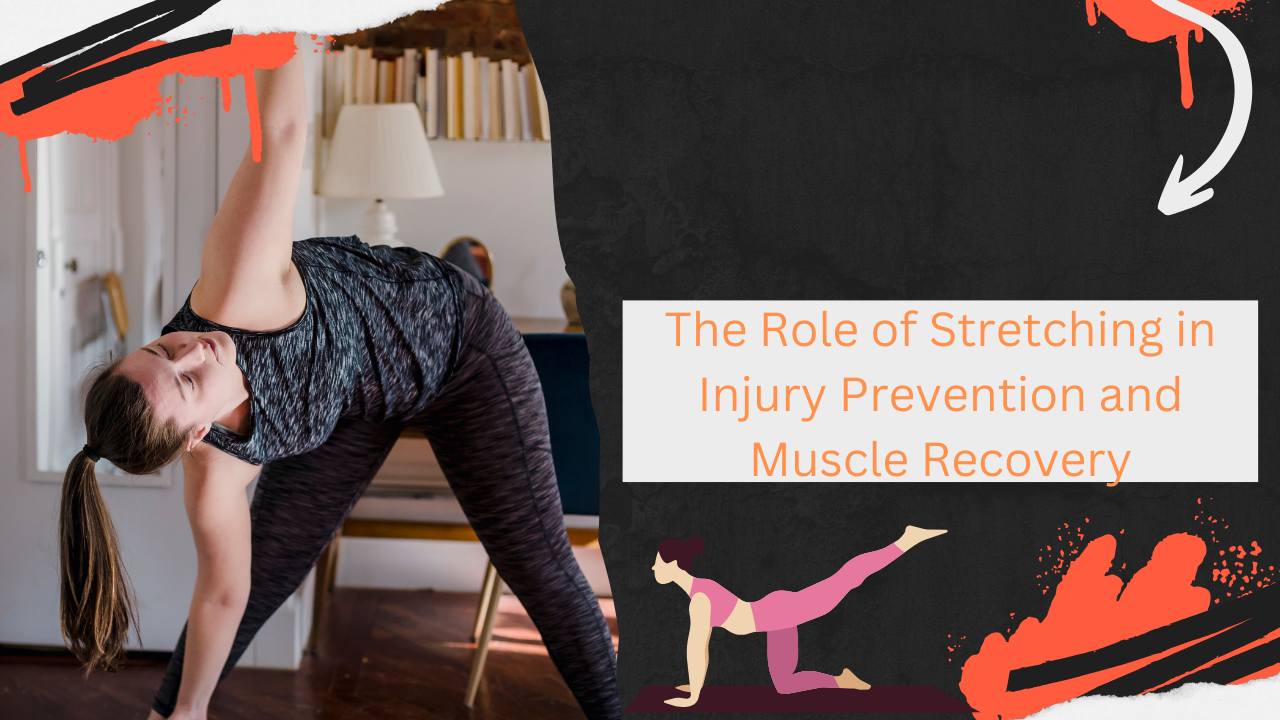Introduction
Have you ever experienced muscle stiffness after a workout or pulled a muscle while exercising? Stretching is often overlooked but plays a crucial role in keeping our bodies flexible, preventing injuries, and aiding muscle recovery. Whether you’re an athlete, a gym-goer, or someone who sits at a desk all day, incorporating stretching into your routine can improve mobility and overall well-being.
In this article, we will explore the science behind stretching, different types of stretches, their impact on injury prevention, and how they aid in muscle recovery. We’ll also provide expert-backed insights, actionable tips, and a step-by-step stretching guide to help you get started.
Why Stretching Matters for Injury Prevention

How Tight Muscles Increase Injury Risk
When muscles become tight or overworked, they lose elasticity, making them more prone to strains and tears. Tight muscles also lead to poor posture and reduced range of motion, increasing the risk of injuries during physical activity.
For example, runners with tight hamstrings are more likely to suffer from hamstring strains, while weightlifters with tight shoulders may experience rotator cuff injuries. Stretching helps lengthen muscles and improve flexibility, reducing the risk of sudden injuries.
Scientific Evidence Supporting Stretching for Injury Prevention
A study that appeared in the Journal of Athletic Training reported that athletes who followed a scheduled stretching exercise had fewer occurrences of muscle strains. Another paper in Sports Medicine was able to state that dynamic stretching before exercise helps improve muscle function and decreases injury risk.
Many professional athletes incorporate stretching into their regimen to avoid injuries. For instance, the elite sprinter Usain Bolt focuses on stretching for flexibility and injury prevention. His routine involves dynamic stretching before training and static stretching after workouts to maintain peak performance.
Not all stretches serve the same purpose. Understanding different stretching techniques helps you choose the best approach for your fitness goals.
1. Static Stretching
- Involves holding a stretch for 15-30 seconds.
- Best for post-workout relaxation.
- Example: Holding a hamstring stretch after a run.
2. Dynamic Stretching
- Involves controlled movements that increase flexibility and blood flow.
- Ideal for warming up before exercise.
- Example: Leg swings before a sprint.
3. PNF (Proprioceptive Neuromuscular Facilitation) Stretching
- Advanced stretching technique involving contraction and relaxation of muscles.
- Commonly used in physical therapy for deeper muscle release.
- Example: Assisted hamstring stretch with resistance.
4. Ballistic Stretching (Use with Caution)
- Involves bouncing movements to push muscles beyond their limits.
- Risky for beginners but useful for trained athletes.
- Example: Bouncing toe touches.
Best Stretching Techniques for Different Activities
For Runners:
- Quad Stretch: Stand on one leg, pull the other foot toward your glutes.
- Hamstring Stretch: Extend one leg forward and reach for your toes.
- Calf Stretch: Press your heel into the ground while leaning forward.
For Strength Trainers:
- Shoulder Stretch: Bring one arm across your chest and hold.
- Hip Flexor Stretch: Lunge forward with one foot while keeping your back straight.
- Lower Back Stretch: Lie on your back and pull both knees toward your chest.
For Office Workers:
- Neck Stretch: Gently tilt your head side to side.
- Wrist Stretch: Extend your arm and pull your fingers back.
- Lower Back Stretch: Sit and twist your torso to one side.
How Stretching Aids Muscle Recovery
Stretching and Delayed Onset Muscle Soreness (DOMS)
Ever felt soreness a day or two after exercising? That’s DOMS, caused by microscopic muscle tears during intense workouts. Stretching helps by:
- Increasing blood flow to deliver oxygen and nutrients to tired muscles.
- Reducing muscle stiffness and promoting relaxation.
- Enhancing muscle repair and reducing post-workout pain.
The Role of Stretching in Circulation and Healing
A study in the Journal of Strength and Conditioning Research found that post-exercise stretching improves circulation and speeds up muscle recovery. By increasing blood flow, stretching helps flush out lactic acid and other waste products that cause soreness.
Case Study: A Marathon Runner’s Recovery
Professional marathon runners often experience muscle fatigue after races. Incorporating gentle static stretching post-run helps alleviate tightness and prevent injuries, allowing them to recover faster for future training.
Common Stretching Mistakes to Avoid
1. Overstretching
Pushing too far can cause muscle strains instead of preventing them. Stretch to the point of mild discomfort, not pain.
2. Holding Stretches for Too Short a Time
To be effective, static stretches should be held for at least 15-30 seconds. Rushing through stretches won’t provide the full benefits.
3. Skipping Warm-Ups Before Deep Stretching
Stretching cold muscles can lead to injuries. A light warm-up, such as jogging or jumping jacks, prepares muscles for deeper stretching.
4. Comparing Flexibility to Others
Everyone’s flexibility is different. Focus on gradual improvement rather than forcing extreme stretches.
Stretching Routine: A Step-by-Step Guide

Pre-Workout Dynamic Stretches (5 Minutes)
- Arm Circles – 30 seconds.
- Leg Swings – 15 reps per leg.
- Torso Twists – 10 reps per side.
- Walking Lunges – 10 reps per leg.
- High Knees – 30 seconds.
Post-Workout Static Stretches (10 Minutes)
- Quad Stretch – 30 seconds per leg.
- Hamstring Stretch – 30 seconds per leg.
- Shoulder Stretch – 20 seconds per arm.
- Back Stretch (Child’s Pose) – 40 seconds.
- Hip Flexor Stretch – 30 seconds per leg.
Daily Flexibility Routine
- Morning: Light stretching to wake up muscles.
- Evening: Deep static stretching to relieve tension.
Expert Insights and Scientific Studies
Dr. Kelly Starrett, a leading physical therapist, states:
“Regular stretching keeps muscles supple and prevents the stiffness that leads to injuries.”
A study in The American Journal of Sports Medicine concluded that dynamic stretching before workouts improves performance and prevents injuries by increasing muscle temperature and elasticity.
Inspiring Stories of Recovery Through Stretching
1. An Athlete’s Comeback from Injury
A professional soccer player suffered a hamstring tear. By incorporating targeted stretching and rehabilitation, they regained mobility and returned to play within months.
2. A Desk Worker’s Journey to Pain-Free Living
A software developer struggled with chronic back pain due to long hours of sitting. Implementing daily stretching exercises alleviated stiffness, improving posture and overall health.
Conclusion and Actionable Takeaways
Stretching is more than just an afterthought—it’s a vital component of injury prevention and muscle recovery. By incorporating dynamic stretching before workouts and static stretching afterward, you can enhance flexibility, prevent injuries, and reduce muscle soreness.
Ready to start? Try a simple 5-minute stretching routine today and feel the difference!
Readmore…https://totalinsights.online/wp-admin/post.php?post=28757&action=edit

